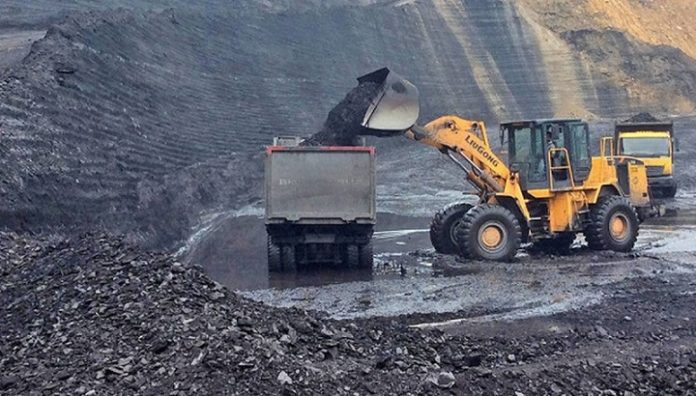By Our Correspondent
NEW DELHI/BHUBANESWAR: Union Minister of Parliamentary Affairs, Coal and Mines Pralhad Joshi in Lok Sabha on Wednesday said that the Methodology for auction of coal and lignite mines/blocks for sale of coal/lignite on revenue sharing basis was approved by CCEA on 20.05.2020 and the order was issued on 28.05.2020. Salient features of the Methodology are as under:
Based on Revenue sharing mechanism. Floor percentage at 4%.Applicable to fully explored as well as partially explored coal blocks.Upfront amount is based on value of estimated geological reserves.Successful Bidder to pay monthly revenue share based on percentage of revenue share quoted, total quantity of coal and notional or actual price whichever is higher.
Incentives for early production, gasification and liquefaction of coal.Exploitation of CBM is allowed.
No restriction on the sale and/or utilisation of coal. More flexibility in coal production schedule.Coal India Limited (CIL) is the largest company in the world in terms of coal production. CIL sells coal to its linked Power and non-Power consumers through bilateral Fuel Supply Agreements and Memorandums of Understanding. CIL also sells coal to the end consumers including traders through various e-auction schemes.
Imported coal constituted 23.7% of the actual demand of coal during the year 2020-21.As per the provisions of the Coal Mines (Special Provisions) Act, 2015 [CMSP Act] and the Mines and Minerals (Development and Regulation) Act, 1957 [MMDR Act], coal mines are allocated to private sector companies by way of auction. Auction of coal mines is done on e-platform after conducting security audit of the e-platform. Further, any prior allottee who is convicted of an offence relating to coal block allocation and sentenced with imprisonment for more than three years is not eligible to participate in the auction.
The Ministry of Mines administers the Mines and Minerals (Development and Regulation) Act, 1957 (MMDR Act, 1957) which is the Central Act that governs the development and regulation of mines and minerals in terms of the powers vested in the Central Government as per Entry 54 of the Seventh Schedule of the Constitution.
The MMDR Act, 1957 has been amended from time to time to promote and conserve the mineral resources of the country. Through the amendment in the MMDR Act in year, 2015, it has been made mandatory that the mineral concessions will be granted through transparent and non-discriminatory method of auction to ensure the fair value of mineral resources to States.
Recently, Ministry of Mines has amended MMDR Act, 1957 through the MMDR Amendment Act, 2021 which has been notified on 28.03.2021 for giving boost to mineral production, improving ease of doing business in the country and increasing mineral production. The amended Act, inter-alia, contains following provisions which promote the mineral sector in the country:
Simplification of exploration regime – (i) To ensure seamless transition of the concession from exploration to production (ii) Mineral Blocks for Composite Licence can be auctioned at G4 level of exploration instead of G3 level as per the earlier standard. (iii) Mineral Block for surfacial mineral can be auctioned for grant of Mining Lease at G3 level instead of G2 level. (iv) Private entities may be notified under Section 4(1) of the MMDR Act for conducting exploration.
National Mineral Exploration Trust shall be a non profit autonomous body; the entities notified under Section 4(1) of the MMDR Act are eligible for funding through funds accrued under NMET.
Further, Section 18 of the MMDR Act, 1957 empowers Central Government to frame rules for conservation and systematic development of minerals and for the protection of environment by preventing or controlling any pollution which may be caused by prospecting or mining operations. Accordingly, Mineral Conservation and Development Rules (MCDR), 2017(amended from time to time) were framed. As per Section 5(2) (b) of the MMDR Act 1957, no mining lease can be granted unless there is a mining plan for the development of mineral deposits in the area concerned duly approved by the Central Government or by the State Government.
Mining Plan incorporates detailed proposals for systematic and scientific mining, conservation of minerals and protection of environment with respect to the lease area. Indian Bureau of Mines IBM is mandated for approval of Mining Plan, as per the provisions of Minerals (Other than Atomic and Hydro Carbons Energy Minerals) Concession Rules, 2016. As per the provisions of MCDR, 2017, Indian Bureau of Mines carries out periodical inspections of mines to monitor conservation of minerals, systematic and scientific mining and protection of environment in the leasehold areas of minerals other than minor minerals, coal and atomic minerals.
Further, section 4A of MMDR Act 1957 empowers the Central Government after consultation with the State Government to terminate Prospecting Licence or Mining Lease, inter alia, for conservation of mineral resources.
Every year, as per approved annual Field Season Programme [FSP], Geological Survey of India, an attached office of Ministry of Mines, takes up different stages of mineral exploration namely reconnaissance surveys (G4), preliminary exploration (G3) and general exploration(G2) following the guidelines of United Nations Framework Classification (UNFC) and Mineral Evidence and Mineral Content Rules (MEMC-2015) for augmenting mineral resource for various mineral commodities including lithium.
During FSP 2016-17 to FSP 2020-21, GSI carried out 14 projects on Lithium and associated elements in Bihar, Chhattisgarh, Himachal Pradesh, Jammu & Kashmir, Jharkhand, Madhya Pradesh, Meghalaya, Karnataka and Rajasthan. During the present FSP 2021-22, GSI has taken up 7 projects on Lithium in Arunachal Pradesh, Andhra Pradesh, Chhattisgarh, Jharkhand, Jammu & Kashmir and Rajasthan. However, resource of lithium has not yet been augmented by GSI.
Further, Atomic Minerals Directorate for Exploration and Research (AMDER), a constituent unit of Department Atomic Energy (DAE),has undertaken exploration for lithium in potential geological domains in parts of Karnataka and Rajasthan. AMDER has also taken up subsurface exploration in Marlagalla area, Mandya district, Karnataka. Reconnaissance surveys have been also carried out along Saraswati River palaeochannel, in Jodhpur and Barmer districts, Rajasthan for locating lithium mineralisation associated with brine (saline water in salt lakes). Preliminary surveys on surface and limited
subsurface exploration by AMD, have shown presence of Lithium resources of 1,600 tonnes (inferred category) in the pegmatites of Marlagalla – Allapatna area, Mandya district, Karnataka.
As per the available records, Lithium bearing minerals are in Part B ‘Atomic Minerals’ of First Schedule to MMDR Act, 1957 and their reserves/resources are not available in National Mineral Inventory.
Under the aegis of Ministry of Mines, a joint venture company named ‘Khanij Bidesh India Ltd. (KABIL) has been formed by three CPSEs namely National Aluminium Company Limited (NALCO),Hindustan Copper Limited (HCL) and Mineral Exploration Corporation Limited (MECL)with equity participation of 40:30:30 respectively, to acquire mineral assets overseas – primarily the critical & strategic minerals including Lithium, Cobalt & others and NOT Rare Earth Elements.
KABIL has signed Non-Binding Memorandum of Understanding [MoU] with non-disclosure agreement with the following three State-owned organizations of Argentina, for the purpose of information sharing w.r.t. prospective mineral acreages:
M/s JEMSE, a State-owned enterprise of JUJUY province on 10th July, 2020,
M/S YPF an Energy major & federal owned enterprises on 9th September, 2020, and
M/s CAMYEN, a state owned enterprise of CATAMARCA province on 29th December, 2020.






















